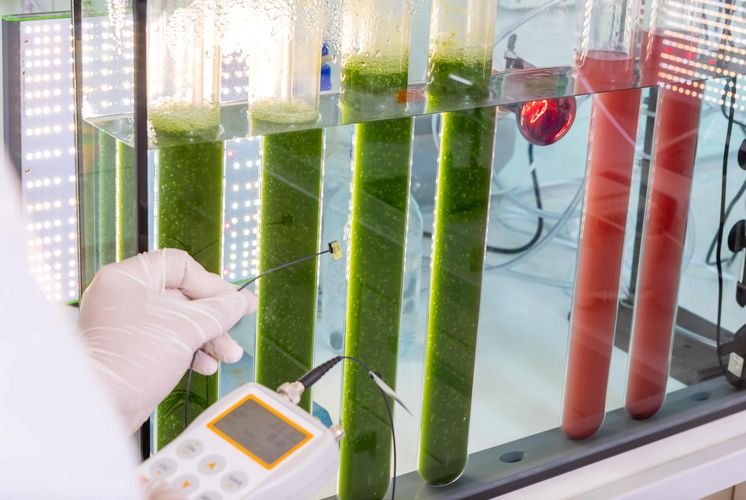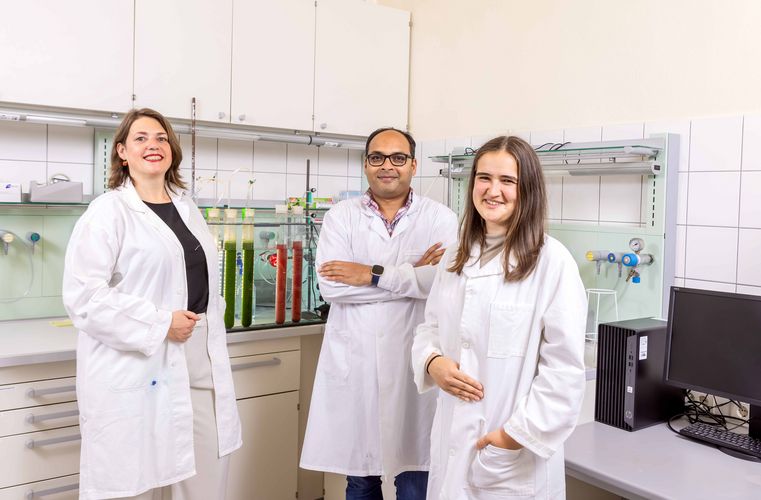“Scientific and technological innovations aimed at reducing greenhouse gases and plastic waste, while providing a sustainable solution to the current feed production system, are urgently needed to address climate change, plastic pollution and food insecurity,” says coordinator Dr Rohan Karande. He recently started as a junior research group leader at the Research and Transfer Centre for Bioactive Matter. “To tackle this, we are dedicated to developing and scaling bioreactors to produce microbial biomass as a value-added feed product from carbon dioxide and methane,” he explains. “We hope to be able to test the pilot-scale prototype in three to four years.”
Tilo Pompe, Professor of Biophysical Chemistry and Scientific Director of b-ACT matter, adds: “We want to start thinking about possible applications right away. It would be too ambitious to create a start-up from the first phase of the project, but it could be a next step. We do however have a top team of materials scientists, engineers, biotechnologists, physicists, computer scientists and mathematicians who will take the technology forward.”
Everything on the agenda sounds challenging, whether it is producing tailor-made porous 3D structures from recycled plastic membranes, developing an efficient mechanism for transporting mass, or ultimately producing large amounts of biomass to enable a continuous production system with high added value. An important point: a working group on a sustainable circular economy in biotechnology will ensure that the ethical, social, political, environmental and cultural impacts of newly developed technologies are considered.
Resource-efficient technologies to support a circular economy
REPLACER has a budget of €1.49 million for the next three years. Five partners have joined forces. In addition to Leipzig University, these are the University of Latvia in Riga, the Leibniz Institute of Surface Engineering (IOM) in Leipzig and two companies, qCoat from Saxony and Holisun from Romania.
REPLACER is one of nine projects that were successfully evaluated last year as part of “M-era.Net”, a network funded by the European Union and established in 2012 to jointly promote the fields of materials research and materials technologies through national and regional funding organisations, in this case the Free State of Saxony.
“The project developments will contribute to the objectives of the European Green Deal and the EU Commission’s Circular Economy Action Plan to develop advanced, resource-efficient technologies to support a circular economy,” explains Dr Susanne Ebitsch, Executive Director of b-ACT matter and Head of the Transfer Unit. She brings a wealth of expertise in technology transfer, exploitation and licensing, as well as quality and project management – all of which can make a difference to projects like REPLACER. “There are many steps to complete before you can say you have a finished product. As a university, we have to create opportunities in this regard and favourable framework conditions, as is currently the case with the establishment of the b-ACT matter research and transfer centre, which is funded by the German government and the Free State of Saxony as part of a structural funding measure,” says Ebitsch. “It is also important to find the right partners. Of course, this requires expertise and you also have to maintain the necessary network with the business community.”


Comments
No comments found!